The BLT Built Design Awards has announced the release of the 2nd edition of their annual book of design – the BLT Built Design Awards Book of Design 2022. This year’s catalog features the 2022 winners in Architectural Design, Interior Design, Project Management, and Construction Product Design categories and includes interviews with the winners.
The catalog is a beautiful showcase of stunning photos, with each page featuring a unique and well-designed layout. It is a comprehensive resource that offers a glimpse into the latest trends and techniques shaping the design industry today.
You can purchase your print copy of the catalog on Amazon and access the digital version for free on the BLT Awards website. By purchasing the catalog, you’ll gain access to a wealth of knowledge and inspiration from some of the most talented professionals in the field, helping you stay ahead of the curve and take your own projects to the next level.
Whether you’re an industry insider or simply an admirer of great design, the BLT Built Design Awards Book of Design 2022 is a must-have addition to your collection. It’s a celebration of creativity and innovation in design, and we’re thrilled to share it with you.
Thank you for your continued support of the BLT Built Design Awards. We can’t wait to see what incredible designs will be celebrated in the future. In the meantime, be sure to order your copy of the BLT Built Design Awards Book of Design 2022 today!
The renowned 3C Awards Group has announced that submissions are now open for the third edition of the BLT Built Design Awards. The awards recognize the expertise of all professionals involved in the realization of outstanding projects on a global scale – from architectural firms and interior designers to Landscape studio and construction products.
The program is open to professional, emerging designers and students until September 2nd, 2023, the program promises to attract entries from some of the most forward-thinking firms from all around the world!
In 2022, the awards received over 650 submissions from 51 countries, the range and quality of projects were as astounding as always, with honorees including Zaha Hadid Architects, Ateliers Jean Nouvel, Perkins & Will, Block Research Group (BRG), MVSA Architects, Laguarda.Low Architects, Foshan Topway Design, querkraft architects and Agence d’Architecture A. Bechu & Associés.
“The BLT Built Design Awards bring together the best and brightest in architecture and design, shining a spotlight on inspired projects, accomplished leaders and their innovative ideas,” said co-founder and Program Director, Astrid Hébert. “We are proud to support and promote these professionals, both established and emerging, as they push the boundaries of what is possible in the construction industry. Join us in 2023 as we continue to showcase excellence in design and architecture at the BLT Awards.”
The award winners are selected through a in-depth voting process conducted by a jury panel of renowned architects, academics, media representatives and industry experts. Their selections showcase international design excellence, avant-garde architectural concepts, new sustainability approaches and creativity in architecture, construction, interior and landscape design,
The 2022 jury, composed of 38 experienced architects, designers, developers, academics and media representatives will select the winners in each category in October 2023. Past jurors have included Steffen Lehmann, Founding Partner and CEO, si_architecture + urban design and Professor of Architecture and Urbanism at the University of Nevada, USA, Alvaro Montoya, Regional Vice President & Studio Head – Lifestyle Brands Americas at Hyatt Corporation – Design Service and , Marie Crabié, Journalist at Tema.archi and Heath Gledhill, Architecture & Design Integration Practice Leader at Aurecon. The 2023 jury members will be announced later this year.
The BLT Built Design Awards are one of the most comprehensive annual awards dedicated to architecture and construction. In addition to the Architecture, Interior Design and Construction Product categories, a new category – Landscape Architecture – has been introduced, allowing any successful firm based anywhere in the world to submit a variety of outstanding conceptual, in-progress or completed projects for this prestigious award.
Register now to be a part of this exciting opportunity and take advantage of the early bird discount of 10% for registrations made before April 30th. Don’t miss out – visit bltawards.com for more information and to register before the final deadline of September 2nd, 2023.
We caught up with “Emerging Architect of the Year 2022” Xudong Zhu, lead designer of Urban Irrigation. While studying at Harvard, Xudong co-founded T.E.N. in Shanghai. As the lead architect, he has led the team to many well-known design awards at home and abroad in recent years. He told us more about his passion for architecture and innovating a typology for urban public space.
Could you tell us a little about yourself?
I was born and grew up in Shanghai. After living there for 25 years, I studied abroad at Politecnico di Milano and worked at UNStudio in Amsterdam before and after I completed my studies at the Harvard University Graduate School of Design in Cambridge, United States. I am currently an urban designer at Sasaki’s Boston office.
How did you discover your passion for architecture and decide to join Harvard University?
Influenced by the rapid development of Chinese cities in the 1990s, especially my hometown, Shanghai, I dreamed in my childhood of being an architect and fantasized about how great it would be if a conceptual building that I designed would become a reality, standing in front of me. After studying architecture at Tongji University in 2012, I started to realize that my dream could come true. It took me seven years to get my bachelor’s and master’s degrees in architecture.
During my graduate period, I had a chance to study at POLIMI as a double-degree exchange student. For my thesis and out of interest, I spent two months visiting 47 local open residential projects and researching 32 shared urban public spaces. From this experience, I was in contact with the complexity and diversity of Milan’s urban public areas. The spatial decisions designed responded to topics such as social equality and environmental inclusivity. Those unexpected development modes, spatial strategies, management methods, and types of activities made me deeply interested in publicity. This experience prompted me to apply for Harvard University’s Master of Architecture in Urban Design, after seven years of architectural studies and work at Tongji University. I hope to understand public space better, and I hope my designs will reflect reasonable publicity and respond to diverse urban topics to a certain extent.
What was your design inspiration behind “URBAN IRRIGATION”?
Urban Irrigation is a representative project since I continue exploring my understanding of designing ecological sustainability with public space, with my girlfriend, Michele Chen, a landscape architect and urban designer studying at Harvard GSD. We see nature as a broadly shared space for the public that includes all beings – humans, and non-humans. In this project, designers are responsible for initiating a co-existing system between nature and urban dwellers. This belief establishes a design prerequisite to create a new typology of urban public space as a spatial product to intrigue a series of nuanced, collective, and experiential activities in, with, and through nature.
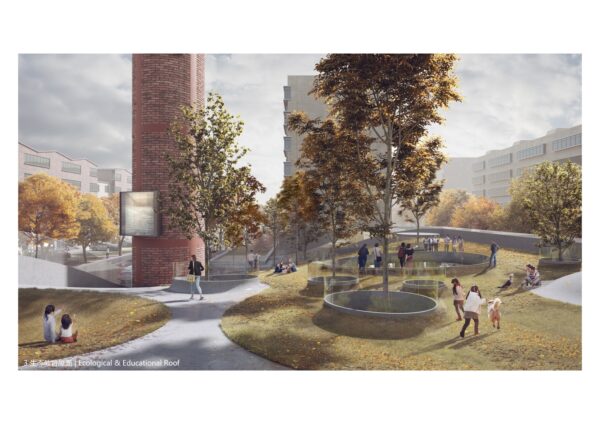
URBAN IRRIGATION
What do you see as the strengths of your winning project and what does this award mean to you personally?
Urban irrigation, in addition to innovating an urban public space typology, redefines the renewal life of urban industrial heritages. Moreover, the project empowers water as the core medium that drives the material process of the space with its public relationships between ecological services, educational engagements, and recreational activities. In technical terms, the project enables the old water tower to form a positive energy production and consumption cycle through rainwater collection, purification, storage, solar power generation, and other energy-saving measures. It transforms a typical street corner into an urban public plaza out of industrial relics, carrying the daily activities of the surrounding residents while preserving the city’s cultural memory.
Urban Irrigation demonstrates my ability to coordinate design across multiple disciplines, such as urbanism, architecture, landscape, and interactive design. This award means a lot. It encourages me to keep exploring the meanings of ecological sustainability in public spaces and pushes me to experiment with them through more practice and research.
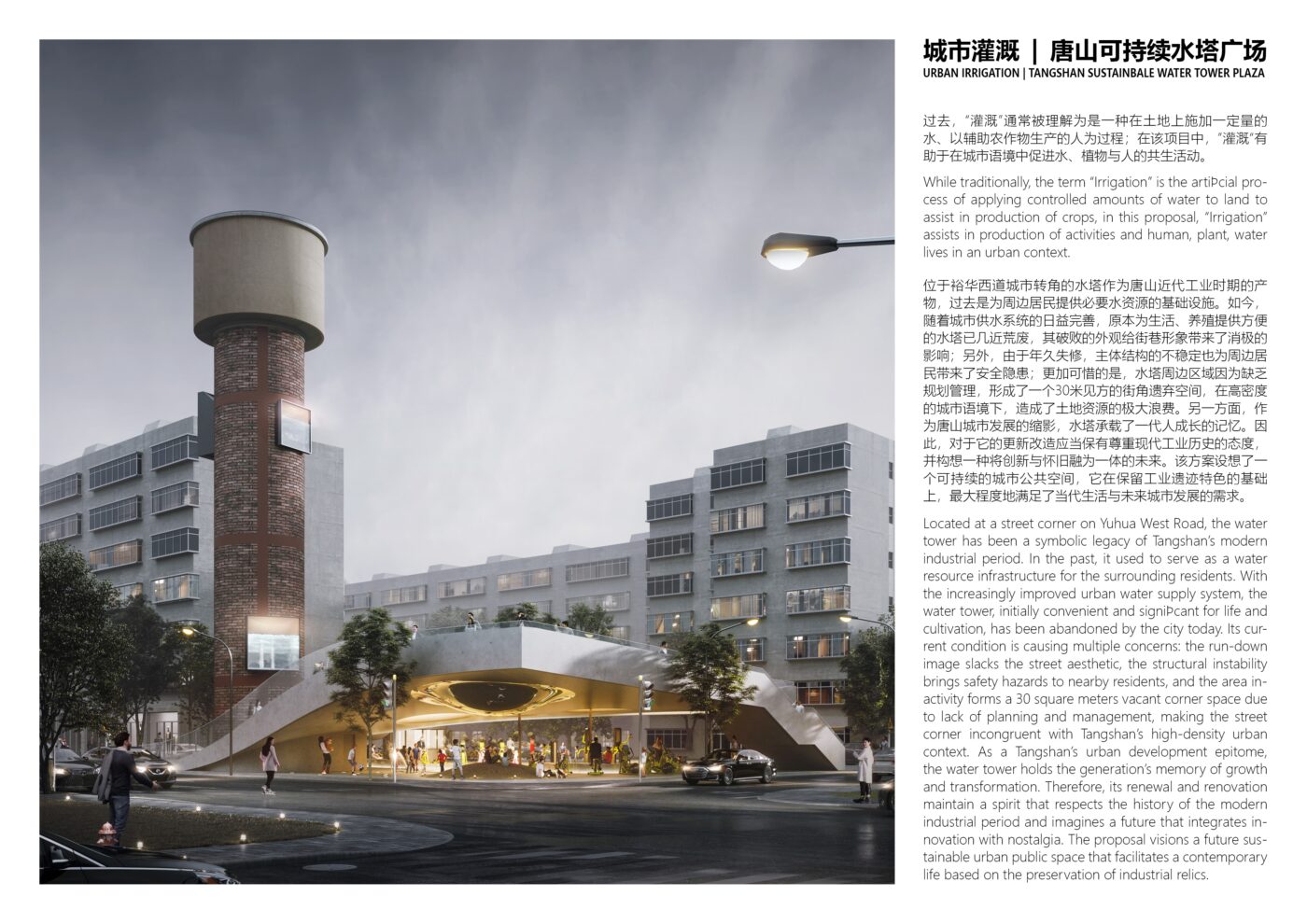
How do you think your own culture and environment have shaped your personal and professional creative vision?
I have lived, studied, and worked in different countries, such as China, Japan, Italy, the Netherlands, and the United States. I believe culture is not a fixed term. My diverse background gives me a more inclusive attitude toward the living environment. When dealing with design-related matters, it is more natural for me to discover, evaluate, think about, and implement in a more comprehensive and innovative way.
What are you working on now? When will you finish your studies?
I graduated from the Harvard University Graduate School of Design in May 2022. After graduation, I became an urban designer at the SASAKI Boston office. SASAKI is an interdisciplinary team that cares about ecology, inclusivity, adaptivity, and definitions of the public realm. While I am learning professional knowledge from different scales of projects at SASAKI, in my spare time I am also doing competitions, research, and project commissions to explore my design manifesto further.
Last, what can we wish for you in the future?
I hope to refine and experiment with my design philosophy through more cross-scaled projects and do my best to create meaningful designs in the future. Finally, thank you for the award and interview. I wish BLT all the best!
The winner of the management product of the year by DesignWithFRANK in New York. We talked to the co-founders, Chloe Fan and Gabriel Munnich, who shared the process and inspiration behind the award-winning project.
Could you tell us a little about your professional journey?
Chloe is from a family construction business in China; growing up around the nuts and bolts of the building world. When I was 15, my city was blooming with construction. But those towers were ugly and removed the cultural and individual identities of the city and its people. I aspired to be an architect and wish to bring a well-designed landscape to the world.
Gabriel, from France, was also crafting, drawing, and tinkering at a young age; he quickly realized that he was most excited when making things.
We met while we were studying architecture at Cooper Union in NY. We immediately realized that we shared a passion for research and architectural technology. We invented and exhibited digital fabrication machines and machine learning research worldwide while we were still students and after. Gabriel developed his thesis around machine learning of architecture, and Chloe developed her thesis about 3D scanning space and urban design. We founded our first practice right after graduating in 2018 and founded FRANK together in 2021.
When did you found the company “Design With Frank”? Why start a new company? What did you envision back then for “Design With Frank”?
We founded FRANK in 2021 inspired by the vision of re-imagine architectural practice on a large consumer scale. We met countless people who shared the paper and pencil sketches of their dream homes and the desire to take control of the design and building process. Designers, contractors, and homeowners all need design software. However, design programs are hard to use and require tons of training. There is no easy way to create a design quickly!
When we created the first prototype of FRANK, we immediately saw it could be to give a new design tool for people. The architecture of the ordinary is important, and, as architects, it is a social duty to envision how to bring design into the large landscape. The development of tools transcends the human landscape.
We realized that most families in the US could not afford to hire architects or could not find the service they needed in architecture firms and decided to solve that issue by creating the most intuitive and fast design home design software for non-professionals.
We have worked with hundreds of individuals and families across the US and helped them design beautiful private homes, and we hope to continue making access to architecture easier.

What was the most important for you when developing this new software?
Most important for us is to be in close contact with our users constantly. We have been hands-on with people’s design to understand their needs and thought processes.
Can you please share with us what winning the “Project Management of the Year” prize means to you?
We are very pleased that our work is recognized by BLT design committees. It is important for us because the design field is advanced by great singular projects and new tools and technologies that enable its process. We focus on the latter and are delighted to be recognized for it.
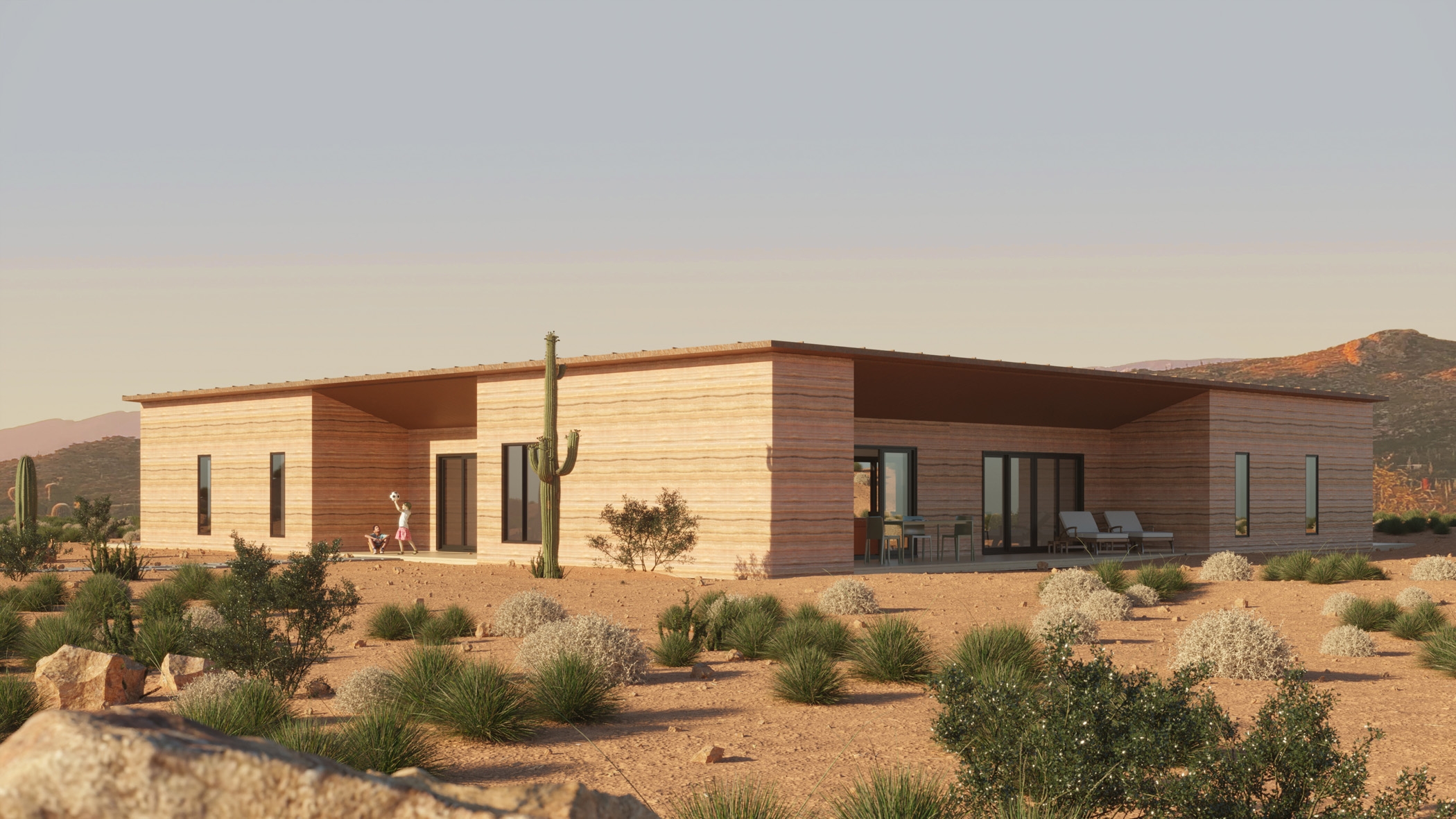
Do you have any upcoming projects or new features to be released that you’re able to tell us about?
We are increasing the flexibility of our design tool so that people can use it to fully customize their space. Our goal is to make good design accessible to everyone through service and technology.
Lastly, what can we wish you for the future?
Design bridges people and material together. Please wish us to reach the goal of making Good design accessible for everyone, and making FRANK accessible for everyone. With our first prototype, we were able to support over 100 homes. The 2.0 will help thousands and millions in the future.
We talked to Zaha Hadid Architects Project Director for BEEAH Headquarters, Sara Sheikh Akbari. Powered by its solar array and equipped with next-generation technologies for operations at LEED Platinum standards, the new BEEAH Headquarters has been designed to achieve net-zero with future-ready technologies for minimal energy consumption. The project won the BLT 2022 Architectural Design of the Year award.
Could you tell us a little about your professional journey? Where are you from?
I obtained my Bachelor’s degree in Architecture from Shahid Beheshti (Meli) University in Tehran. Shortly after graduating, I moved to London to study at the Architectural Association in London, where I received my Master’s in Architecture in 2007.
I then joined Zaha Hadid Architects, and since then I have led several design competitions and architectural projects from the early design stage through completion. I was a lead designer and one of the key members of the Heydar Aliyev Center project in Baku, and the project director of the BEEAH Headquarters project in the UAE.
What was the design brief for the “BEEAH Headquarters” project? What was most important for you when planning this project?
BEEAH headquarters embodies BEEAH Group’s twin pillars of ‘sustainability’ and ‘technology.’ BEEAH’s profile as an environmental management company and the brief to design a building to be an exemplar of sustainable design set high aspirations for the project from the outset. This influenced the geometry and formal composition of the building, its relationship to its context, the arrangement of the spaces, the MEP, the structural and lighting design, and every aspect of the project.
Echoing the surrounding landscape of dunes shaped by prevailing winds, the design responds to its environment as a series of interconnecting “dunes,” oriented and shaped to optimize local climatic conditions.
Ensuring all internal spaces are provided with ample daylight and views while limiting the amount of glazing exposed to the harsh desert sun, the design consists of two primary “dunes” housing the public and management departments together with the administrative zones that interconnect via a central courtyard that defines an oasis and gathering space within the building.
Demonstrating how technology can scale sustainable impact, BEEAH’s new headquarters serves as a blueprint for tomorrow’s smart, sustainable cities.
How would you describe your role in this project?
I was the project director of our BEEAH Headquarters project in the UAE, leading the team and managing the design and delivery of the project.
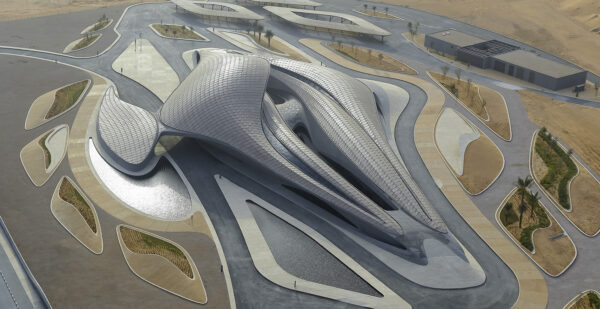
BEEAH Headquarters, Photo Credit: Hufton+Crow
BEEAH Headquarters has been designed to achieve net zero with future-ready technologies for minimal energy consumption. What were the biggest challenges you and your team faced?
While the ambitious outlook follows the aspirations of the region, at the time of our appointment there was a shortage of regional precedents for projects with similar objectives in terms of sustainability. This posed challenges in meeting the targets set for the project, such as uncertainty about the region’s resources, among other things.
What was put in place to reduce or optimize energy consumption?
➪ The building’s photovoltaic system generates power to meet the building’s peak summer demand, thus producing excess electricity during off-peak months, which is then fed back into the grid. Tesla batteries allow this system to power the building at night.
➪ Its external glass-fiber reinforced concrete cladding system, also locally produced, increases the building’s thermal mass and dissipates heat away from the interiors.
➪ The design minimizes the glazing exposure to the harsh desert sunlight while ensuring ample, high-quality daylight and views within the internal spaces.
➪ The building’s structure is comprised of locally sourced and recycled construction materials.
➪ An on-site water treatment facility filters wastewater to minimize consumption.
➪ Native or adaptive species of vegetation have been specified to minimize the need for irrigation.
➪ Using digital twin technology with self-learning and self-healing capabilities, the building’s smart management system predicts occupancy by automatically adjusting light and temperature to optimize energy efficiency.
➪ Powered by its solar array and equipped with next-generation smart technologies, the new headquarters has been designed to operate to LEED Platinum standards and net-zero energy. The new headquarters is a climate-conscious building that constantly modulates itself, becoming smarter and more efficient while drawing on data from its living laboratory.
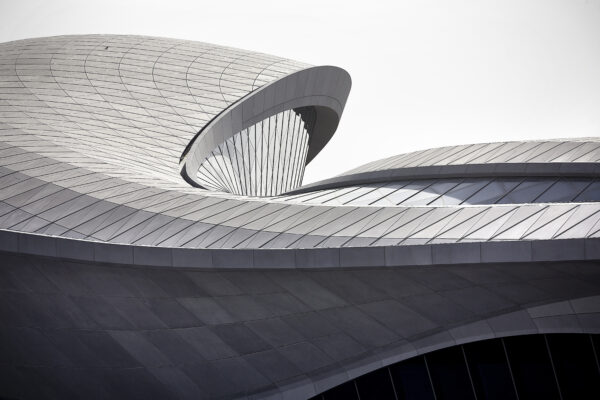
BEEAH Headquarters, Photo Credit: Hufton+Crow
Can you please share with us what winning the “Architectural Design of the Year” prize means to you?
We are delighted that BEEAH has been selected as the Architectural Design of the Year by BLT Awards. BEEAH Headquarters has been a memorable project, filled with challenges and excitement, made possible by the passion of all those involved. It is rewarding to see all these efforts come to fruition and witness the end users’ experiences with and enjoyment of the building.
In general, what is your guiding design principle?
Our designs often explore logic and coherence within the environment. We focus on providing a unique response to the client’s brief with current and future site conditions, to achieve each project’s full potential.
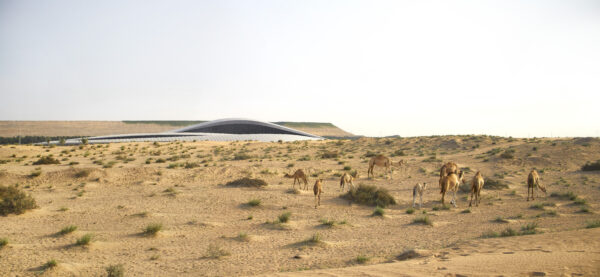
BEEAH Headquarters, Photo Credit: Hufton+Crow
Last, what can we wish for you in the future?
We hope to continue developing opportunities where design meets sustainability at its core, and together with our team of collaborators, we hope to continue designing buildings we can all be proud of.
Winner of the BLT 2022 Interior Design of the Year, KAMA-ASA Shop is an architectural project designed by KAMITOPEN Co., Ltd. in Japan. We talked to the lead designer Masahiro Yoshida who shared with us his inspiration behind the award-winning project.
Could you tell us a little about your professional journey?
I was born in 1977 in Osaka, Japan. In 2001, I graduated from the department of architecture, Kyoto Institute of Technology “Waro Kishi laboratory”, and I joined TAKARA SPACE DESIGN the same year. I established KAMITOPEN architects in 2008, an Architecture Office firm centered around Interior Design.
How/when did you discover that you wanted to work in design?
I chose my career path when I was in high school.
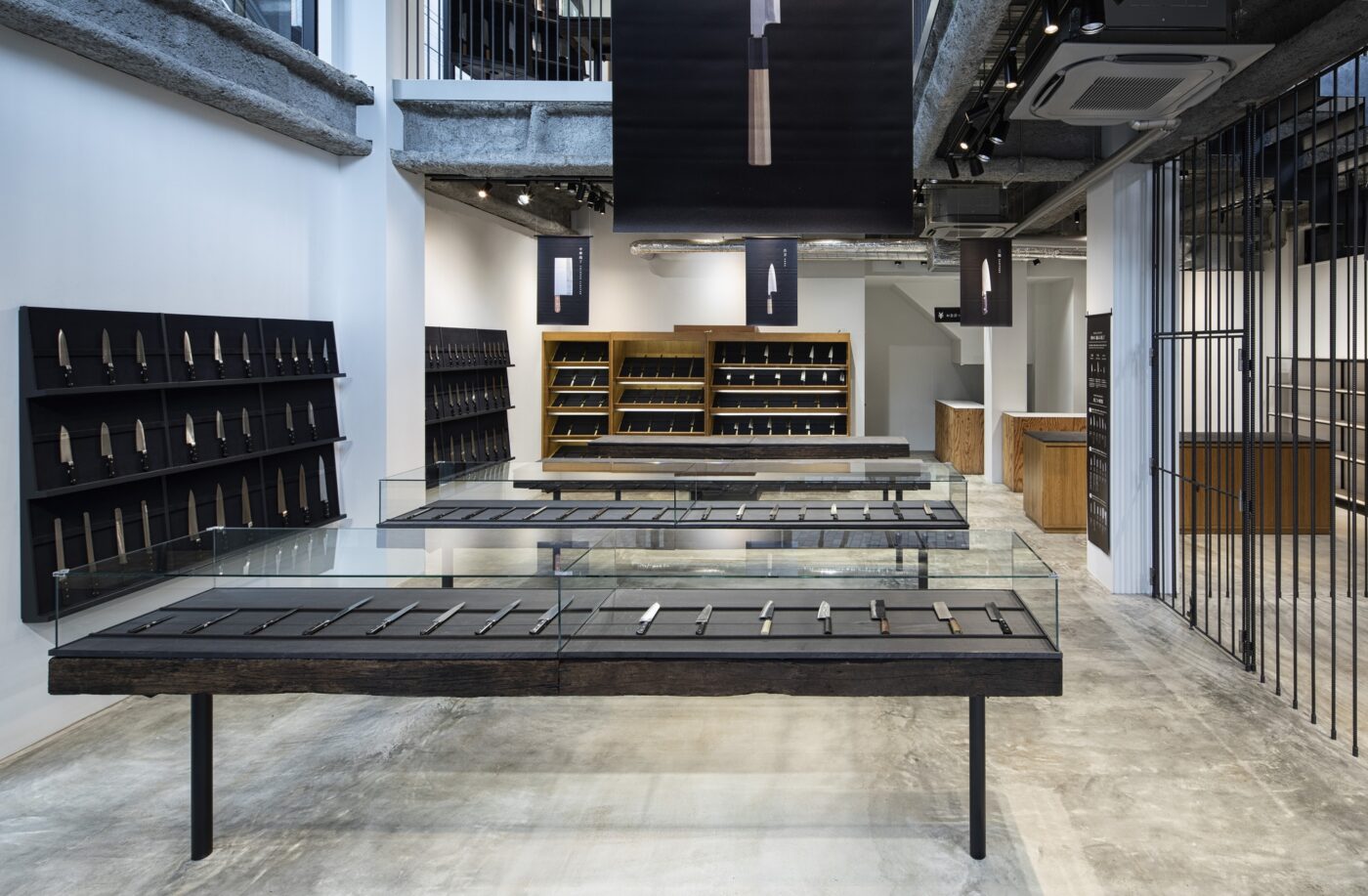
What was your inspiration to create KAMA-ASA Shop?
I was inspired by the craftsmen who make kitchen knives. As KAMA-ASA Shop’s policy is set on the belief that good tools are made for good reason, it delivers to the customers the excellent skills of craftsmen creating kitchen utensils. Therefore, the most appropriate for the shop’s space was to show the architectural skills of craftsmen. The rebar, a stick-shaped rolled steel that is usually hidden in the wall became the main feature of the design.
What was most important for you when planning this project?
Since the renovation 10 years ago led to this new construction project, the 10-year commitment of the client and staff was most important.
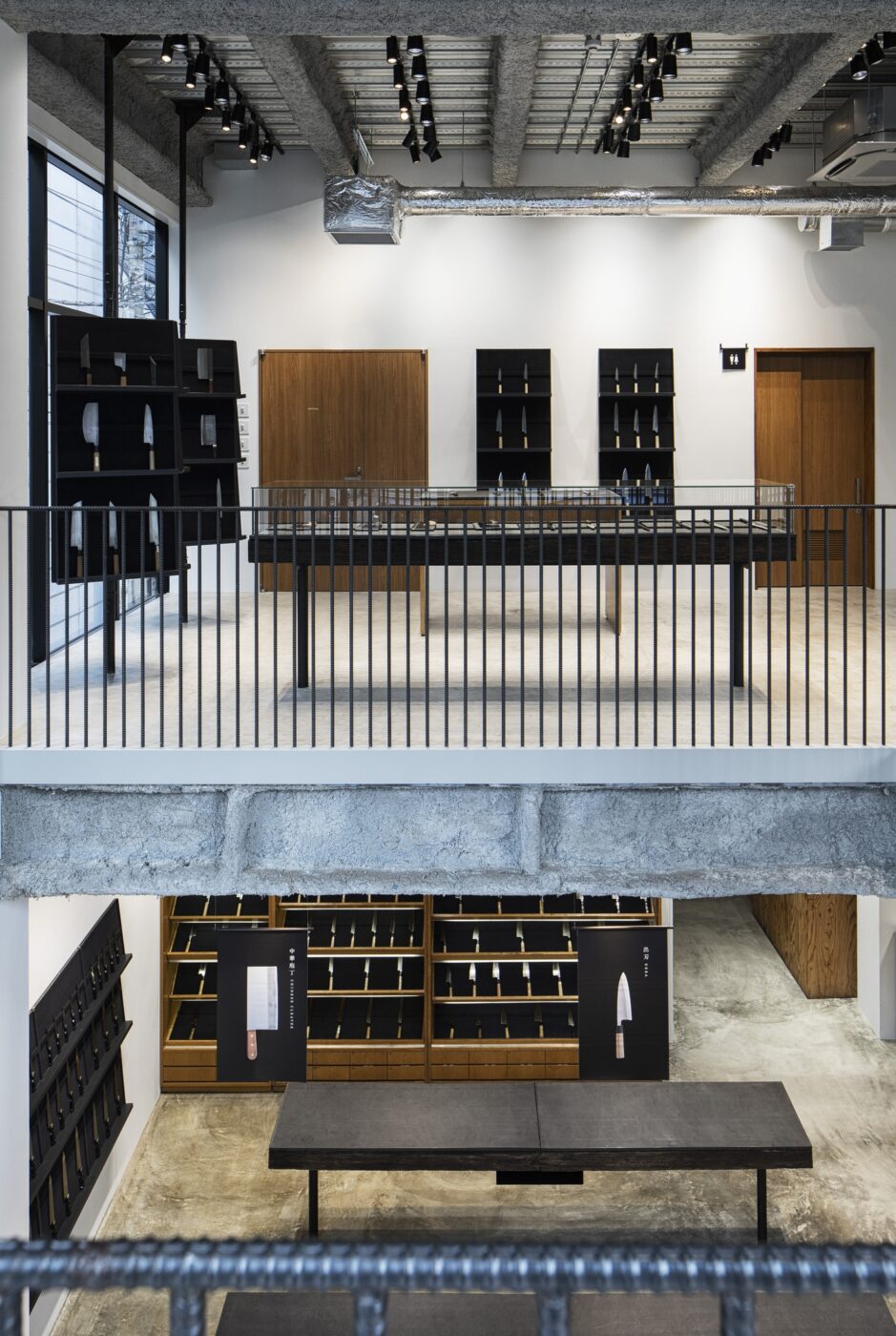
Can you please share with us what winning the “Interior Design of the Year” prize means to you?
We are pleased to have been recognized for the work we have done over the past 10 years with our clients. It encourages us to continue to work with the same stance for the next 10 years.
What are you working on at the moment, and do you have any upcoming project or upgrade that you’re able to tell us about?
I am currently designing a solo sauna facility. It is a space where you can feel the outside environment while being indoors, using the latest technology. I am interested in eliminating the boundary between indoors and outdoors.
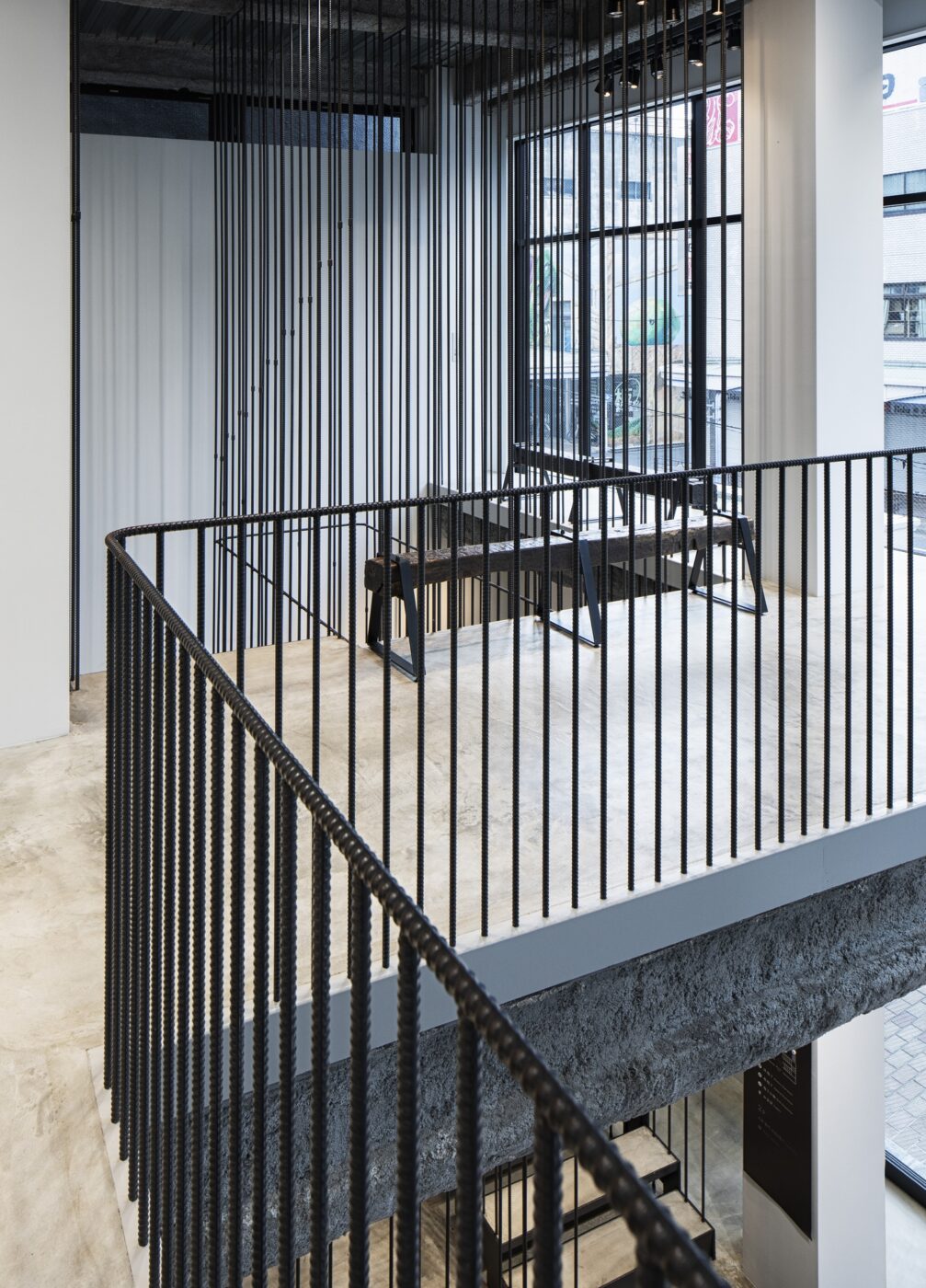
We talked to Karl Yin, winner of the BLT 2022 Construction Product of the Year for YiBrick. It is a permeable brick that contains over 90% recycled ceramic, locally invented and made in China, where 18 million tons of non-degradable ceramic waste are produced every year.
Could you tell us a little about your professional journey?
In 2010 I was a ceramic student in Jingdezhen, China’s ceramic arts and manufacturing center. Everywhere I went in town, the waste materials from clay manufacture could be seen in huge piles along with the domestic garbage. As a designer myself working with clay I also produced a lot of waste. I began searching for ways to help solve this problem. As a graduate student a few years later at Central St Martins in England, I made this issue the topic of my research and explored methods of converting recycled ceramics into new strong and sustainable materials. After returning to China, Caroline Cheng and I started Yi Design and quickly established a design lab and small run factory. We reached out to many people to gather materials to design process and offer to the building industry.
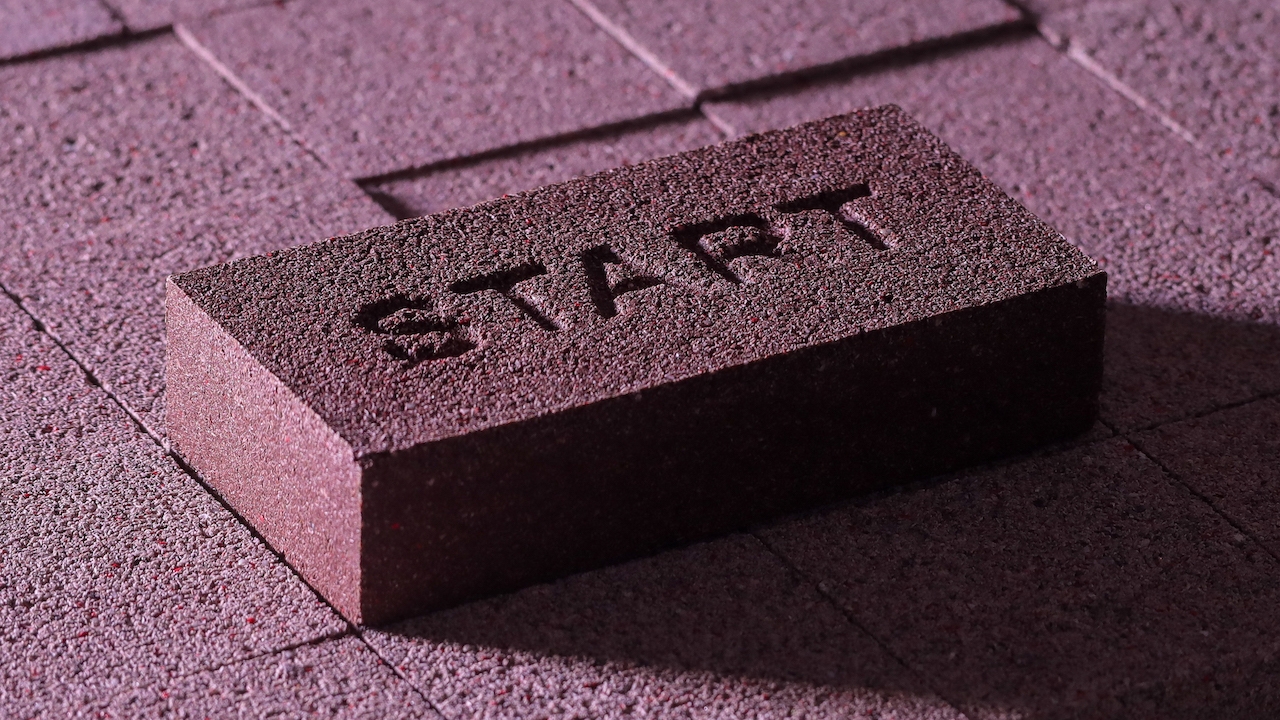
YiBrick contains over 90% recycled ceramic, can you explain us the challenges faced by the ceramic industry in China?
China produces 18 million tons of ceramic waste annually and most of it is usually illegally dumped or buried. Our main challenge and goal have been collecting the waste and recycling it at the same rate as they are produced. At present, making building products such as bricks and tiles with this material is a big part of the solution.
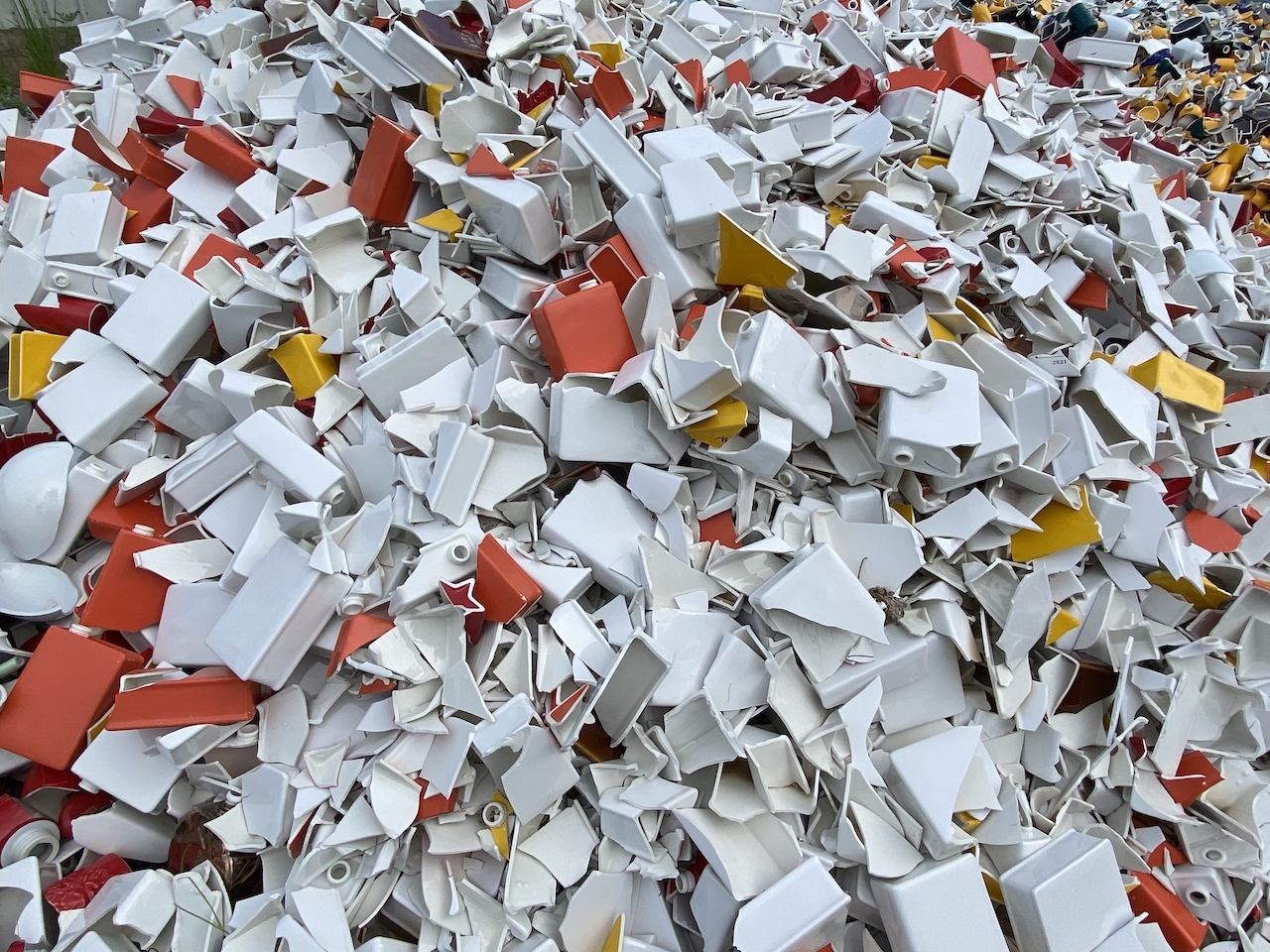
What was the initial idea of YiBrick? Can you please share more on the production process of YiBrick?
500 sponge cities are planned for China, and part of the concept of sponge cities is using a permeable brick to absorb the rainwater and utilize it, rather than allowing it all to flow into sewage. We created a porous brick (YiBrick) using ceramic waste materials. The process has great promise of significantly improving the environment through recycling ceramic waste. We crush and remanufacture these particles as raw materials. The binder we invented makes the remanufacture possible without the need for cement, glue and other non-environmentally friendly substances. Currently, YiBrick permeable bricks have reached a high recycling rate of 97+%. And this adhesive allows our products to be recycled again, making it a circular product.
From the beginning we apply the SDGs to the setting up of our lab and factory, we hope to set the standard for this industry in the future.
How are you distributing? Is YiBrick available worldwide?
We are completely open to market needs outside China, and there are already many overseas clients who are paying attention to or want to use our products. Top architectural firms such as MVRDV and OMA are interested in our materials. Interested parties can directly contact us through email. We are working on creating a sales and marketing team to distribute the product worldwide.
Having said that, we hope to work with local ceramic industries around the world so that transportation carbon footprint can be lowered and we can also help take care of the ceramic waste in their area.
What is your annual production and what support do you need to expand?
Our production is in the first phase of expansion, reaching 450,000-500,000 square meters per year in 2023. We will consume more than 80,000-100,000 tons of ceramic waste per year on average. We currently need capital to increase production capacity and lower our price point.
Can you please share with us what winning the “Construction Product Design of the Year” prize means to you?
The BLT Built Award has raised awareness of the importance of sustainable practices in building and construction. Our material made from 97+% recycled ceramics is a strong, beautiful, and sustainable product. By receiving BLT Built Award, we at Yi Design are proud to raise awareness of ceramics recycling and its critical role in the planning and design of modern architectural projects.

What are you working on at the moment, and do you have any upcoming project or upgrade that you’re able to tell us about?
Currently, we are completing the first manufacturing model for a ceramic production area in Jingdezhen. The model will expand to the rest of the country, and we hope the world, where there are ceramic production areas to help the ceramic industry form a closed loop, zero pollution and waste, and 100% recycled and circular products.
We are improving our products as well as researching into including other waste. We hope to design beautiful building materials and be able to reach out to all those who care about the environment. We also want more variety of products that could be used in other industries such as art and product design.
Lastly, what can we wish you for the future?
The realization of our dream through recycling ceramic waste, impact our environment and help to establish sustainability in the field of building design.
Emerging Interior Designer of 2022 and Savannah College of Art and Design student, Yue Che, shared with us the success story of her award-winning project, “Ally – A center for Children Psychological Trauma Recovery.”
Could you tell us a little about yourself?
Hi! I am from China and am currently an interior design graduate student about to finish my degree at the Savannah College of Art and Design. I am passionate about art and travel, and I always keep an observant and creative eye on life, which I consider my source of inspiration. Outside of school, I also work as a freelance architectural illustrator, helping people portray what their homes look like.
How did you discover your passion for interior design and decide to join the Savannah College of Art and Design?
I began studying drawing and art as a child, which laid the foundation for my aesthetic pursuits. Through my four years of undergraduate studies in environmental design, I became concerned with integrating and utilizing people and their surroundings. To explore the perceptual experience and emotional changes of human beings in space, as well as the balance of aesthetics and function in space, I decided to further my interior design skills and attempt to create meaningful spaces through the professional knowledge and advanced resources provided by SCAD.
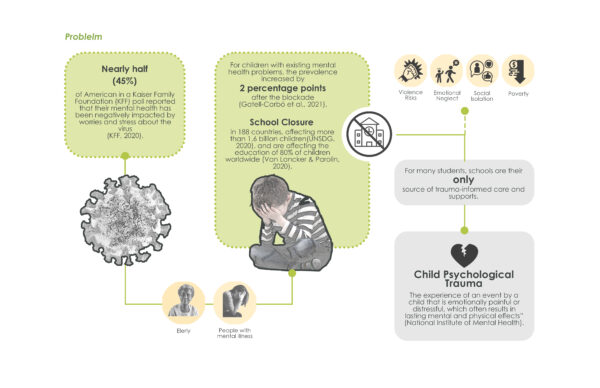
What was your design inspiration behind “Ally- A center for Children Psychological Trauma Recovery”?
Children’s mental health has been neglected. I initially researched designs to address children’s trauma out of curiosity and found that there was a lack of relevant designs on the market. So, my original intention was to create a new design paradigm and awaken the public’s attention to children’s mental health. After case studies and interviews with experts, I found that communication therapy and horticultural therapy were the most effective solutions that could be easily accepted and understood by children. Those were the inspirations that informed the entire design solution, which is dedicated to providing them with an equal, connected, and relaxing environment.
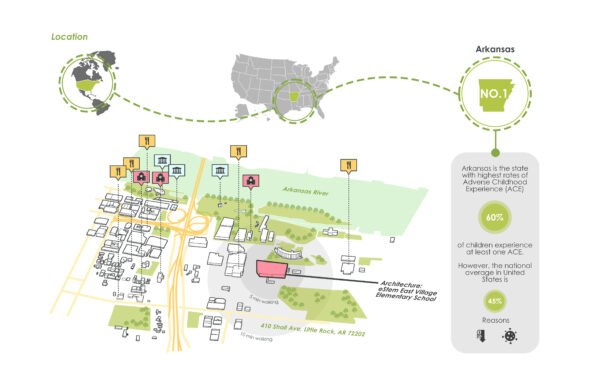
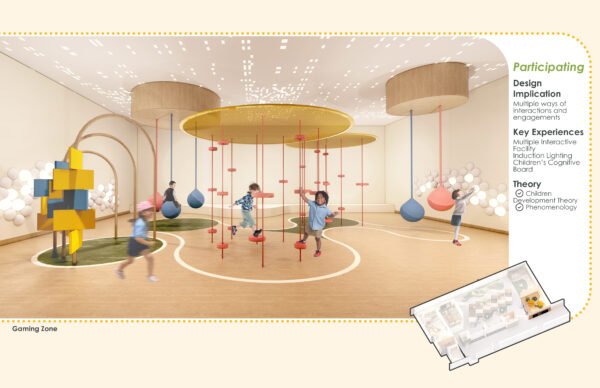
What do you see as the strengths of your winning project, and what does this award mean to you personally?
The project is meaningful in that it seeks an innovative approach based on theory and research to solve current social issues through interior design and urges the audience to be more aware of the mental health and real requirements of vulnerable people, including children and the elderly. I am honored that this design is recognized, and this award will inspire me to continue to improve my skills in this field moving forward!
How do you think your own culture and environment have shaped your personal and professional creative vision?
Creativity is deeply rooted in culture. Growing up in an environment of collectivist culture has shaped me to be inclusive and open-minded, and to always maintain empathy for others. In addition, blending diverse cultural experiences with a more holistic perspective and integrated approach helps me to listen to more different voices and enhances my personal creative and critical thinking.
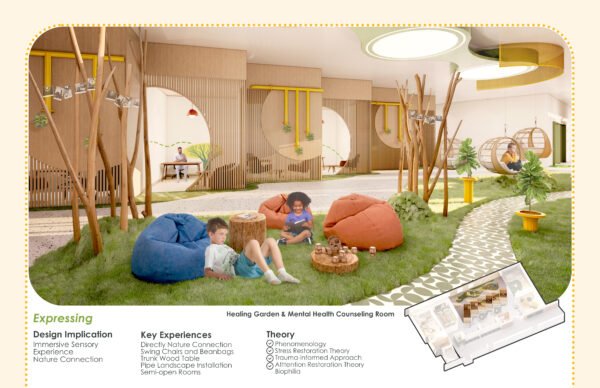
What are you working on now? When will you finish your studies?
I will graduate in December 2022, and it has been a rewarding and impressive time at SCAD. I’m currently learning the skills to convey interior design effects better and looking for a great opportunity to put all my knowledge and skills into practice.
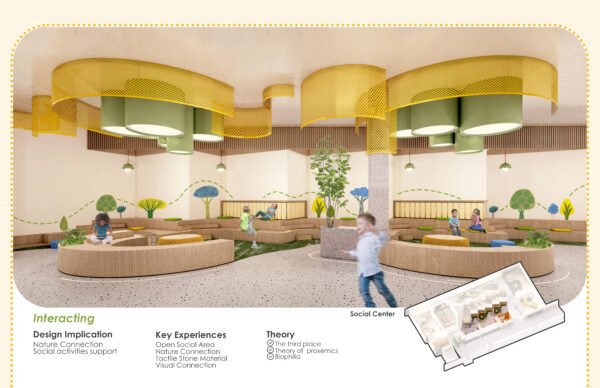
Last, what can we wish you for the future?
The courage to make mistakes, the determination to pioneer, and many more amazing and meaningful designs!
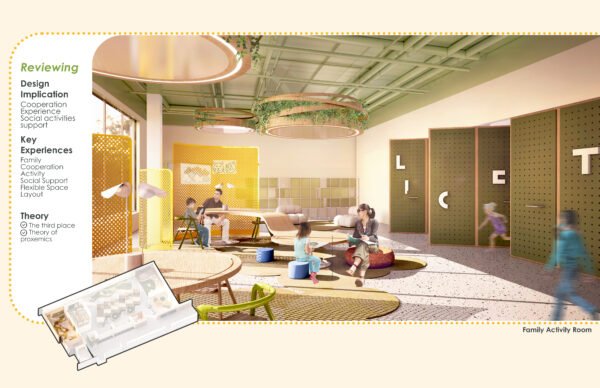
The BLT Built Design Awards judges were impressed by the high level of innovation and creativity of the winning entries that include names enjoying international reputation such as Zaha Hadid Architects, Ateliers Jean Nouvel, Agence d’Architecture A. Bechu & Associés, Sanjay Puri Architects, Stonehill Taylor, Perkins & Will, querkraft architects, Laguarda Low Architects, dwp – design worldwide partnership and more
Zurich, Switzerland – The renowned 3C Awards Group, has announced the winners of the second edition of the BLT Built Design Awards, which recognize the expertise of all professionals involved in the realization of outstanding projects on a global scale – from architectural firms and interior designers to construction products and project management.
The submissions for the 2nd edition of the BLT Awards closed at the beginning of October 2022, leaving the jury panel composed of 36 experienced architects, designers, developers, academics and media representatives to select winners in each category. The program received over 650 submissions from 51 countries, representing 54 categories. The judges evaluated each project based on their own merit; rewarding the most pioneering and ground-breaking designs and selecting those standing out, based on new concepts, innovations and sustainability initiatives.
The range of work was astounding, Zaha Hadid Architects was awarded the “Architectural Design of the Year” title for BEEAH Headquarters; based in Japan, KAMITOPEN won the “Interior Design of the Year” prize for KAMA-ASA Shop in Tokyo; Yi Design Company Limited received the “Construction Product Design of the Year” award for the innovative YiBrick made of recycled ceramic and Design With Frank by FRANK software was awarded ” Project Management of the Year”.
In the student categories, Xudong Zhu, a student at Harvard University received the prize of “Emerging Architect of the Year” for his design of Urban Irrigation; while Yue Che, a student of the Savannah College of Art and Design won the “Emerging Interior Designer of the Year” for Ally- A center for Children Psychological Trauma Recovery.
“At the BLT Built Design Awards, we strive to support and promote inspired projects and innovation by professional and emerging designers from around the world; assembling in one platform outstanding projects from Hong Kong to Canada, Germany and Australia.” said co-founder and Program Director, Astrid Hébert. “This program will continue to showcase Architecture and Design excellence in the construction industry.”
Other honorees from the 2022 BLT Built Design Awards included, Ateliers Jean Nouvel with The Wellness Center at 53 West 53 in New York city, Richärd | Kennedy Architects won with the Cruzen-Murray Academic Library, from France the Agence d’Architecture A. Bechu & Associés received multiple prizes, querkraft architects in Austria was awarded with their project called IKEA – the good neighbor in the city; CRAFT Arquitectos in Mexico won with their Architecture of the Torre Helix, Perkins & Will with the University of Washington, Life Sciences Building in Seattle, Dna Barcelona Architects received an award for the Tree Life, Tulum project and Casson Mann for the Pressoria – Centre d’interprétation sensorielle des vins de Champagne.
Winners will receive extensive publicity over the next year to present their achievements to a global audience. Their designs will be featured in the BLT Awards annual Catalog of Design, which will be distributed worldwide, and they will also receive the BLT Built Design Awards certificate and badge of Achievement, as well as a year-round profile in the BLT Awards Online Architectural Directory. To view the full list of the BLT Built Design Awards 2022 winners in architecture, interior design, building products and project management, click here.
BLT Built Design Awards is a global reference in the construction industry, representing the best of Architecture, Interior Design, Construction Product Design and Project Management.
The 2022 BLT Built Design Awards is accepting entries into its four major categories, from architectural design, interior design, construction products design and project management. It welcomes submissions from professional, emerging designers and students until the 9th of October 2022, the program promises to attract entries from some of the most forward-thinking firms from all around the world!